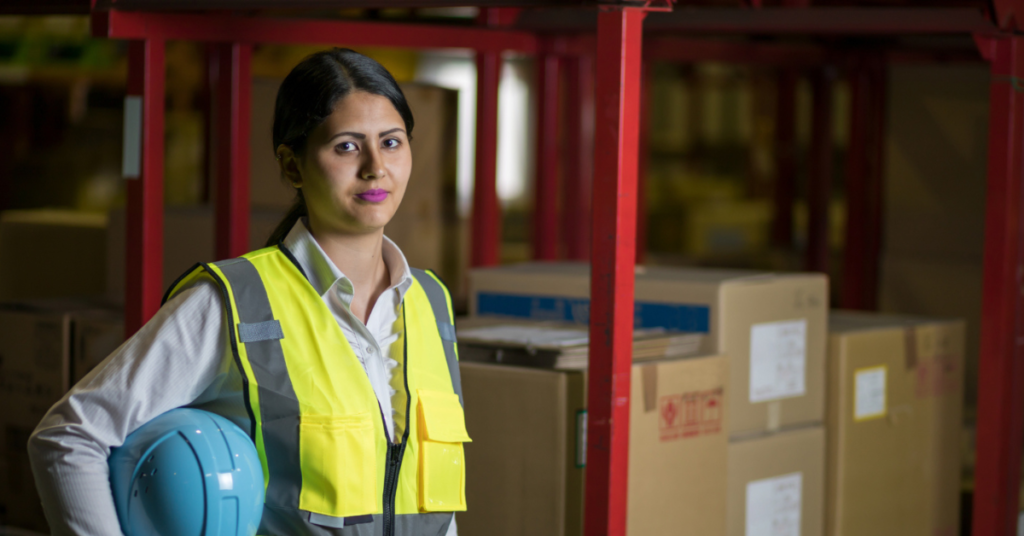6 min read
It’s going to take more than 130 years to close gender gaps across the world, according to the World Economic Forum. This means that half of the world’s population will not have equal access to opportunities and will have to contend with lack of gender equity at their workplaces, in education, in our political systems and in healthcare. Gender inequity is a massive global problem that is hindering the progress of the world’s commitment to the SDGs. While the problem is prevalent globally, we need contexualised, localised solutions to ensure that development is sustainable, collaborative and meaningful.
Closer home, in India we are on the precipice of multiple opportunities. According to a Confederation of Indian Industry (CII) report, if India’s demographic dividend is productively employed, growth prospects will brighten, helping to leapfrog its GDP from the current $3 trillion to $9 trillion by 2030 and $40 trillion by 2047.
However, a lot is to be done to harness the potential of India’s demographic dividend. There are 354 million working-age women in the country, of whom 128 million are in urban India. Among working-age urban Indian women, 83% come from households with low income. In India, women’s workforce participation has plummeted from 45% to 27% from 2005 to 2019. The pandemic had further made explicit and exacerbated the inherent gender biases and patriarchalmindsets that hinder women’s economic participation. The World Economic Forum’s 2022 report ranks India at an abysmal 143 out of 146 countries in ‘Women’s Economic Participation and Opportunity’.
Digging deeper into unearthing the biases, inherent at homes that form the first locus of control for women (literally and figuratively) to step into the labour force, FSG, a global nonprofit consulting firm’s interviews with 6600 women in households with low incomes, revealed that:
- 69% of key decision-makers (e.g., husbands and fathers) firmly believe that the main role of a woman is to look after the home and the children.
- 84% of women need to secure their families’ permission to work
While these dismal statistics face us, what’s promising is that the aspirations of women remain undeterred, numbers with a glimmer of hope appeared:
- one out of two women are either working or seeking a job
- 64% of women strongly believe that to be self-reliant, it is important to work
- Supporting personal and family expenses is a key reason for over 90% of women working or seeking jobs
With a view to bridge the hopes of women to opportunities that can absorb this talent, the Children’s Investment Fund Foundation (CIFF) and FSG together aim to work towards a mission of sustainably placing one million women from households with low incomes in jobs by 2032, by shifting companies’ mindsets and practices. Their theory of change with the Growing Livelihoods Opportunities for Women (GLOW) program works with the reality that companies perceive employing women as risky and challenging. GLOW strives to work towards changing the mindsets of the companies with the view that more of them hire women.
The idea is to tap into existing companies and industries that could employ more and more women into the workforce. By means of an intensive exercise to shortlist the industries, FSG found that the following industries have a high potential to hire women:
- Logistics, and
- Flexi-staffing
Keeping this in mind, how might we then continue to harness the potential of women from low income families, to work with stakeholders, and help these women secure economic freedom and self empowerment?
CIFF and FSG sought to explore the aforementioned question and theory of change with the members of the Asian Venture Philanthropy Network (AVPN). AVPN is Asia’s largest social investor’s network that enables its 600 member network representing foundations, corporates, impact funds, venture capitalists, individuals to move capital towards impact in Asia, effectively. With one sixth of members in India alone, AVPN is uniquely positioned and committed to building a vibrant and high impact social investment community in the region. As an enabler, AVPN recognizes the fact that initiatives such as the GLOW program are the need of the hour for India, to relentlessly pursue the collective goal towards furthering women’s economic empowerment and equity. GLOW is solving an important problem and harnessing a golden opportunity- as they continue to work with partners who will enable more employment opportunities for women.
The AVPN South Asia Social Investment Summit 2023, held over two days in Mumbai, India brought together representatives of philanthropic organisations, foundations and impact organisations. At the summit, CIFF and FSG explored, with the aforementioned stakeholders, the role of philanthropy to accelerate the investments made to boost women’s work force participation with a view to listen, engage and push our thinking to what we could all do together. A few key recommendations that emerged from the discussion are outlined below:

- While philanthropy is making big investments in skilling programs, there is a need to also invest in eliminating the invisible and physical barriers that stop women from accessing these programs. These include investing in programs that encourage mindset shifts, both at the micro (household) and macro (industry) level.
- An example of investing in mindset shifts in the micro level would include family counseling, enabling the decision makers to see the value of investing in employability and skilling beyond the household. It would also include creating a community of women and relatable role models that emulate the success and challenges of a woman in the formal workforce.
- At the macro level, this could also mean adding outcomes based financing (e.g., mandatorily linking skilling to job creation, funds tied to retention not just completion of training and mandating a certain percentage of women in the company’s workforce).
- Mindset shifts require patient capital that is malleable and responsive to the evolving needs of the stakeholders.
- To make these efforts more sustainable, philanthropy needs to encourage and advocate for gender-equitable organisation policies; think tanks advising the government skilling councils, must make this an issue that is communicated often and organisations must be incentivised to address their biases in hiring women. A few recommendations that emerged under this ambit are:
- Generate awareness among employers about the benefits of hiring women in the workforce, ensure that organisations are reporting their gender and diversity data and such reporting is not cumbersome.
- Ensure that gender diversity in the workforce continues to be an essential criteria for an investor to invest in organisations.
- Develop financial instruments (e.g., guarantee-linked loans) or benefits for the private sector that are linked to gender diversity.
- Create support hubs that multiple employers can utilise , (e.g., creches, women helpdesk) to cater to the needs of the women workforce.
- Institute policies for men, which are pro family (e.g., paternity leave, family leave) and ensure there is a culture that applauds the uptake of these policies among the male workforce.
The urgency and gravity of the situation remains tied tothe hopes of millions of women who are waiting to be employed and are battling a fixed mindset both at home and in organisations that could employ their skills, grit and determination. If we are to enable and unlock India’s demographic dividend, now is an opportune time to address the root causes of what is leading to plummeting female labour force participation while bridging the gender gap. And we cannot do this alone. We need the support of the private sector and philanthropic capital to move the needle for one million women in India. We urge our readers to actively engage with the issue at hand and lend their support to advance female workforce participation in India.
Read more about the GLOW Program, the approach and research here.
References:
- “Investing in a Brighter Future for Women and Girls”, Pioneers Post, 15 November 2022
- “Countdown 2047: How Demographic Dividend Can Become a Demographic Curse”, The Economic Times, 14 August 2022
- “What Does the Working-age Indian Woman Want, and Why?”, India Development Review, 29 November 2022
- “India Ranks 135 Out of 146 in Global Gender Gap Index”, The Hindu, 14 July 2022
- “Growing Livelihood Opportunities for Women (GLOW)”, FSG, accessed 2 February 2023


















